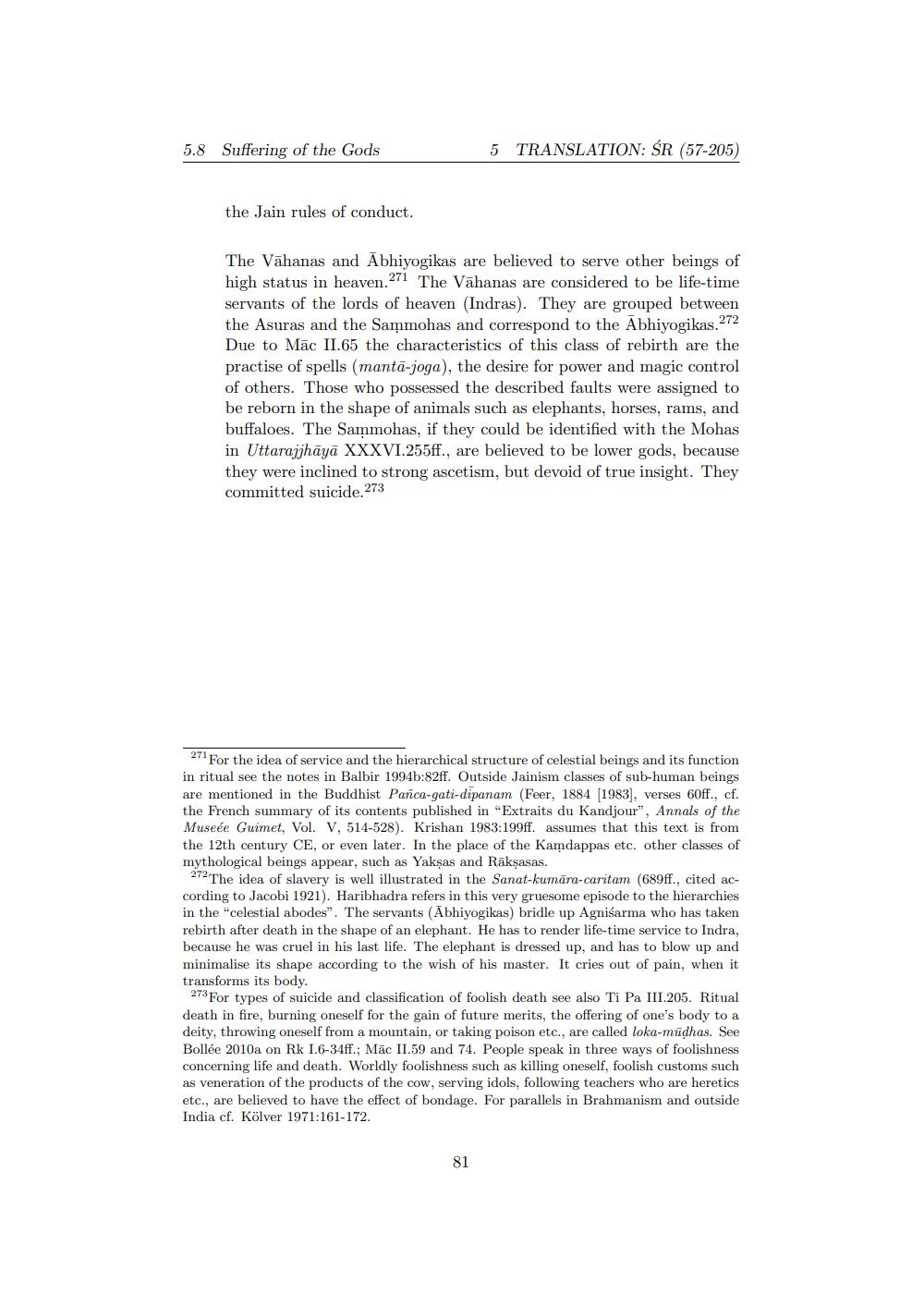________________
5.8
Suffering of the Gods
5
TRANSLATION: SR (57-205)
the Jain rules of conduct.
The Vāhanas and Abhiyogikas are believed to serve other beings of high status in heaven.271 The Vāhanas are considered to be life-time servants of the lords of heaven (Indras). They are grouped between the Asuras and the Sammohas and correspond to the Abhiyogikas.272 Due to Māc II.65 the characteristics of this class of rebirth are the practise of spells (mantā-joga), the desire for power and magic control of others. Those who possessed the described faults were assigned to be reborn in the shape of animals such as elephants, horses, rams, and buffaloes. The Sammohas, if they could be identified with the Mohas in Uttarajjhāyā XXXVI.255ff., are believed to be lower gods, because they were inclined to strong ascetism, but devoid of true insight. They committed suicide.273
271 For the idea of service and the hierarchical structure of celestial beings and its function in ritual see the notes in Balbir 1994b:82ff. Outside Jainism classes of sub-human beings are mentioned in the Buddhist Panca-gati-dipanam (Feer, 1884 (1983), verses 60ff., cf. the French summary of its contents published in "Extraits du Kandjour", Annals of the Museée Guimet, Vol. V, 514-528). Krishan 1983:199ff. assumes that this text is from the 12th century CE, or even later. In the place of the Kamdappas etc. other classes of mythological beings appear, such as Yakşas and Rākşasas.
272 The idea of slavery is well illustrated in the Sanat-kumāra-caritam (689ff., cited according to Jacobi 1921). Haribhadra refers in this very gruesome episode to the hierarchies in the celestial abodes". The servants (Abhiyogikas) bridle up Agniśarma who has taken rebirth after death in the shape of an elephant. He has to render life-time service to Indra, because he was cruel in his last life. The elephant is dressed up, and has to blow up and minimalise its shape according to the wish of his master. It cries out of pain, when it transforms its body.
273 For types of suicide and classification of foolish death see also Ti Pa III.205. Ritual death in fire, burning oneself for the gain of future merits, the offering of one's body to a deity, throwing oneself from a mountain, or taking poison etc., are called loka-mudhas. See Bollée 2010a on Rk 1.6-34ff.; Māc II.59 and 74. People speak in three ways of foolishness concerning life and death. Worldly foolishness such as killing oneself, foolish customs such as veneration of the products of the cow, serving idols, following teachers who are heretics etc., are believed to have the effect of bondage. For parallels in Brahmanism and outside India cf. Kölver 1971:161-172.




